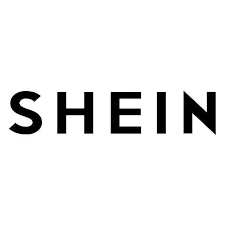Advertisements
THE fast fashion is becoming better known in the world of fashion today. The Shein, an online retail giant, is a great example of this. It excels at offering fast fashion and cheap, which attracts many people. But the Shein's popularity also raises concerns about the environmental and social problems it causes.

Shein
Let's take a closer look at the tendencies that the Shein creates and how they affect our planet. We will also discuss more conscious and sustainable ways of dressing that are starting to appear as alternatives to fast fashion.
Advertisements

Introduction to the concept of fast fashion
THE fast fashion is a type of business that makes clothes quickly. This helps brands like Zara, H&M and Shein to launch new collections frequently. They follow the latest tendencies, offering new products at prices that attract many people.
This method of producing clothing leads to overconsumption and waste. People end up buying more than they need because of the constant newness. This raises concerns about the damage to the environment and the working conditions in the factories.
Advertisements

History of Shein and its rise in the market
THE Shein history started in 2008. Initially, it was a bridal dress store. However, in 2012, it changed its focus to fashion feminine. This was an important step for the Shein's growth in the world. Since then, the company has increased its product range. It has also used e-commerce platforms to reach more people.
Shein stood out a lot in the social media. This helped the brand grow quickly and become a leader in the fashion e-commerce. In 2021, it became the fourth largest importer of fashion from Brazil. The success shows how Shein managed to enter new markets and attract many customers.
Shein's Fast Fashion: Trends and Impact
Shein has changed the fast fashion game with a digital platform. It quickly detects new trends tendencies and makes them accessible. This allows the brand to meet consumers' desires almost instantly, creating a differentiated shopping experience.
However, the negative side of fast fashion is huge and worrying. Shein's speed of production and distribution leads to excessive consumption. This greatly increases the amount of clothing discarded, contributing to the problem of textile waste. This situation worsens the crisis of sustainable fashion, already pointed out by experts and activists.
Shein encourages consumption focused on having more, not better. This behavior encourages a culture of throwing away what has barely been used. These actions are not only questionable from an ethical standpoint. They also put our environment at risk, as they use up our planet’s limited resources.
The influence of social media on Shein's popularity
To the social media are essential for Shein to be popular, especially with young people. TikTok has become an important place to share opinions about shopping. Shopping videos, called “haul videos,” increase the desire to buy. They show the latest fashions at a glance.
The importance of “haul videos” on TikTok
Shopping videos on TikTok receive millions of views. Influencers share their recent Shein purchases in these videos. They show the clothes and how to wear them. This makes people want to buy the same items immediately. This desire increases impulse purchases and strengthens Shein in people’s lives.
How influencers shape trends
Influencers have great importance in social media and fashionable. With loyal followers, they run the Shein's popularity when they share their choices and looks. Their advice helps followers decide what to buy. This reinforces the brand on the internet and unites fashion with shopping.
Environmental consequences of mass production
THE mass production of clothing is very harmful to the environment. This happens due to the excessive use of natural resources and pollution from industries. Due to fast fashion, we use a lot of water and energy, in addition to producing waste that affects nature.
Waste of natural resources in the sector
Cotton farming, for example, uses a lot of water. Synthetic fabrics require petroleum, which is harmful to the environment when extracted and processed. This damages ecosystems and reduces biodiversity.
Gas emissions and pollution caused by industry
Mass fashion is a huge problem for the planet. Its production, transportation and disposal increase air and water pollution. We urgently need to change our consumption and production habits.
Social impact and working conditions in factories
Workers in Shein’s factory suppliers face harsh conditions. They work hard and earn little, highlighting the problems of fast fashion. The factories exploit their workers, who work in unhealthy conditions without having their rights guaranteed.
The most serious problems include:
- Long hours of work without adequate rest.
- Lack of adequate protection in the work environment.
- Low wages that barely cover basic needs.
Companies seek to cut costs and increase production, forgetting about the well-being of employees. This shows the need to discuss the actions of the fashion industry. We need to talk about ethical consumption and production.
Shein's consumer profile in Brazil
Shein has gained a lot of popularity in Brazil, especially among younger people. Shein's consumers stand out for wanting things that are fashionable and affordable. Most of its customers are part of Generation Z. They love to look for new things on social media, such as Instagram and TikTok, which have a big impact on your fashion choices.
Who Shops at Shein? Demographics and Preferences
People who shop at Shein know exactly what they want when browsing the site. They are mainly interested in:
- Products with affordable prices.
- Clothes that are in fashion today.
- Promotions and discounts offered frequently.
- The convenience and ease of buying online.
Sustainable alternatives to fast fashion
The world is more aware of its choices these days. sustainable fashion appears to be a good solution. It responds to the problems caused by fast fashion. Thrift stores are gaining ground as they offer unique and good quality clothing. They also help to avoid waste by promoting conscious consumption.
Ethical and sustainable brands are emerging more and more. They choose eco-friendly materials and ensure good working conditions. This change in the way fashion is produced seeks to reduce damage to the environment. Choosing pieces that last longer and are versatile shows a commitment to the future of the planet.
The role of legislation and taxation in the fast fashion industry
In Brazil, import laws are getting tougher. Especially for fast fashion, such as Shein products. They are more closely monitored when they enter the country. This helps fight tax evasion and makes the market fairer.
The government is paying more attention to protecting local industry. By placing tariffs on foreign products, we protect Brazilian businesses. This also encourages production here, improving jobs and the economy.
With more people shopping online, the government wants to adjust the laws. The goal is to balance the consumption of foreign items with the strength of Brazilian industry. This can make the local sector stronger and better able to compete in the global market.
The future of fast fashion and Shein
The future of fast fashion, particularly with Shein, shows a big challenge. Brands are under pressure to change. They need to consider the impact of their actions on the environment and society.
Emerging trends in the fashion sector
New trends in fashion are changing what consumers want. One important idea now is the circular economy. This means that brands should think about recycling, reusing and reducing waste.
- The growth in demand for eco-friendly products.
- Transparency initiatives in the production chain.
- Valuing brands that implement ethical practices.
These changes point a new path for the fast fashion. It won’t just be speed that counts, but how brands adapt to current demands. For Shein to survive, it needs to innovate fast. And adopt a business model focused on sustainability.
The birth and criticism of Shein's business model
Shein stands out for being fast and having low prices. But this raises questions about ethics and sustainability. To the criticism of fast fashion go beyond damage to the environment. They include exploration of workers and conditions in factories. Producing fashion this fast and in mass often ignores workers' rights and nature.
Ethics and sustainability issues
Pursuing low prices and launching collections directly is not sustainable. The relationship between waste and poor workmanship is clear. Consumers are thinking about the real cost of cheap fashion. They want to know what it means to “democratize fashion” when ethics is forgotten. People also wonder how the sustainability fits into this model. For fair fashion, with the planet and people, it is vital to support responsible, social and environmental practices.
Conclusion
An analysis of fast fashion, such as Shein, shows a scenario of pros and cons. This model makes fashion more accessible, but it also raises concerns about the environment and social issues. There are many clothing options available, which is good. However, this raises important ethical questions.
Looking at the future of fashion, we see a challenge. We need to find a balance between following trends and being conscious about our purchases. With environmental crises on the rise, both consumers and brands need to think more carefully about their choices. Changing the way fashion works requires a better understanding of how clothes are made and the impact this has on our planet.
Ours conclusion about fast fashion is a call to action. It is vital that everyone, from shoppers to big businesses, make more conscious and environmentally friendly choices. future of fashion is at the junction of style with ethics. We can create fashion that is good for people and the environment. Fashion should seek beauty, but also justice and care for the planet.



